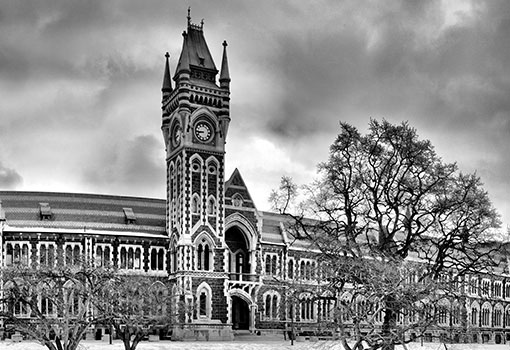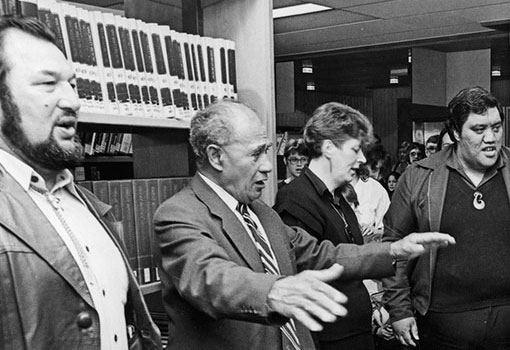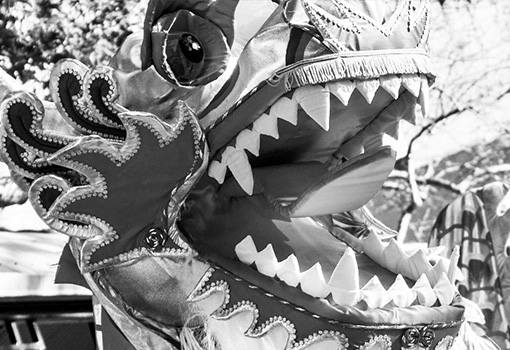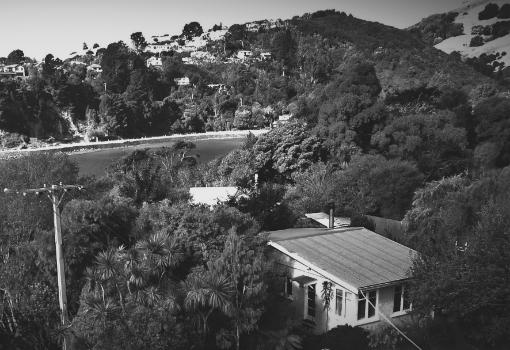Following Colin McCahon
Posted: Monday Nov 23, 2020
Everything seems to come a little late to Aotearoa New Zealand, and even later to Dunedin, its southernmost university town. As we have learned this year, belatedness can be a good thing. But in the art world, it has often made New Zealanders feel a generation behind the curve.
While New Zealand literature, from Katherine Mansfield to Eleanor Catton, has found an international audience, New Zealand art remains little known beyond these islands. This was set to change with a planned October exhibition at the Royal Academy focused on New Zealand’s great 20th-century artist, Rita Angus; but the pandemic has delayed its opening.
Closer to home, belatedness continues to beset an equally important figure, the artist Colin McCahon. Born in 1919, McCahon only found his modernist vision in the decades after the Second World War — just as Europe and the Americas were falling for abstract expressionism. Nevertheless, he managed to push modernism in some uniquely Antipodean directions. And, by the end of his career, he had explored a series of subjects that saw him recognized as New Zealand’s most important artist of the 20th century.
This year, Dunedin has been an ideal place to reflect on McCahon’s work, albeit belatedly. While the centenary of his August 1, 1919 birth has come and gone, several recent exhibitions shed light on McCahon’s artistic achievement and his mana — a Māori term that intimates both influence and spiritual power.
Though McCahon’s work is often associated with the area around Auckland in the North Island, he spent his youth in Dunedin and the first half of his life in the South Island. An early masterpiece, Otago Peninsula (1946–49), usually hangs rather humbly above a dim stairway in Dunedin’s public library. It recently appeared in well-lit splendor beside two earlier versions in the Dunedin Public Art Gallery’s exhibition, “A Land of Granite: McCahon and Otago,” which focused on the artist’s evolving representations of the local landscape. In the definitive iteration, the magisterial peninsula hills, rising from cold Pacific waters, resemble bent or reclining human forms covered in a mantle of dark volcanic green. This is a romantic vision of New Zealand before human habitation: neither roads nor settlements mar the land’s pristine appearance. It’s as if the spirits of the land alone are present, preparing to awake.
One detail I missed until this rehang is the long stretch of sky: a misty arch of stormy grey gives way to a lighter blue-grey below, suggesting a distant but approaching calm. It’s a sky well known in Dunedin, and it conjures a favorite McCahon theme: the promise of light. The writer Charles Brasch called the painting “the finest landscape ever done in NZ.”
The link between land and body is extended at the University of Otago’s Hocken Library exhibition, “Colin McCahon: A Constant Flow of Light,” which provides a fine overview of the artist’s changing styles. The Hocken exhibition calls attention to the anthropomorphic physicality (and divinity) in McCahon’s work by placing several landscapes beside his early images of Christ on the cross. Of particular interest is the Hocken’s own Crucifixion (1949), where the dark curved lines of the figure’s stretched pectoral muscles find a visual parallel in the surrounding South Island setting. As McCahon’s friend the poet James K. Baxter put it, “His Christs and angels are reconciled with the fertile hills behind them.”
McCahon’s work altered significantly in 1958, after he and his wife Anne spent four months traveling across the United States, taking in Old Masters as well as recent paintings by Pollock, Rauschenberg, and others. A major work resulting from this experience was The Wake (1958), sixteen panels of hanging, unstretched canvas that present a long poem by McCahon’s friend John Caselberg. The poem, a sincere lament for Caselberg’s Great Dane, has not aged well; but the panels are a remarkable meeting of abstract art and calligraphy. Behind the words, the influence of painters like Rothko or Frankenthaler is evident. But the primacy of the painted word moves 20th-century Western art into an area few other artists explored. McCahon’s thick cursive lettering would become as iconic in New Zealand as Rothko’s multiforms or Kline’s giant strokes of black paint.
McCahon’s treatment of landscape changed too. Perspective and recognizability were put aside, replaced by blocks and bands of evocative color. The curved lines present in the hills and human form of Crucifixion reappear in the simplified shape of the waterfalls that would become another important motif. The Hocken exhibition includes a series of McCahon’s waterfall drawings, and the University of Otago’s main library, down the road from the Hocken, contains his mural commission, Waterfall theme & variations (1966), where the placement of the falls, like imperfect reflections, form giant Vs, anticipating the simplified crosses and monolithic Taus of his later works.
Returning to the Art Gallery, the Big Wall, the largest indoor space in New Zealand for changing artwork, was occupied for more than a year by John Reynolds’s The Falls (2019). Its stay was extended by the pandemic, and it has only recently been painted over — the fate of all Big Wall commissions. The Falls was an overt reimagining of the library’s Waterfall mural on a grander and more colorful scale. But it also engaged with the latest and perhaps last myth of New Zealand art: McCahon’s disappearance in April 1984. The artist and his wife had travelled to Sydney, Australia for the opening of his first overseas retrospective. On the morning of the opening, McCahon became separated from Anne in the sprawling Botanical Gardens. Friends and admirers searched the park to no avail. He was found by police the following morning in Centennial Park, some five kilometers away, unable to explain how he got there.
McCahon was already in poor shape when he visited Sydney. At 64, he was suffering from Korsakoff Syndrome, brought on by alcoholism. Today, his confusion is familiar to anyone who has had a friend or relation with dementia; and these days, security cameras would no doubt tell us exactly where McCahon went and what he did during those lost hours. But the disappearance took place at another time, when it could still enter a nation’s artistic imaginary.
Reynolds’s recent output is an extended homage to this perplexing event, as well as to Martin Edmond’s 2011 work of creative nonfiction, Dark Night: Walking with McCahon. Edmond’s book, an Antipodean cult favorite, employs the 14 Stations of the Cross (another important McCahon motif) as a scaffold for combining personal memoir, the history of Sydney, and a wander through the neighborhoods that McCahon might have traversed. On the Big Wall, words and phrases from Edmond and McCahon mingled with Reynolds’s own musings beneath the falls.
Reynolds’s foreshortened title called attention to the three falls commemorated in the Stations. It also encouraged us to reflect on our own human frailties. Belatedly, for a work created last year, The Falls opened a new resonance between that strange moment in McCahon’s life and our own strange moment — his blank space in Sydney and our own blank space of 2020. Others may find imaginary power in this horrible year; but most of us would prefer to forget it.
https://blog.lareviewofbooks.org/essays/following-colin-mccahon/



